
Oops! Something went wrong while submitting the form.

If you want to find out how to increase your rankings on YouTube, you’ve come to the right place! This is the ultimate step-by-step guide to YouTube SEO and ranking optimization in 2024.
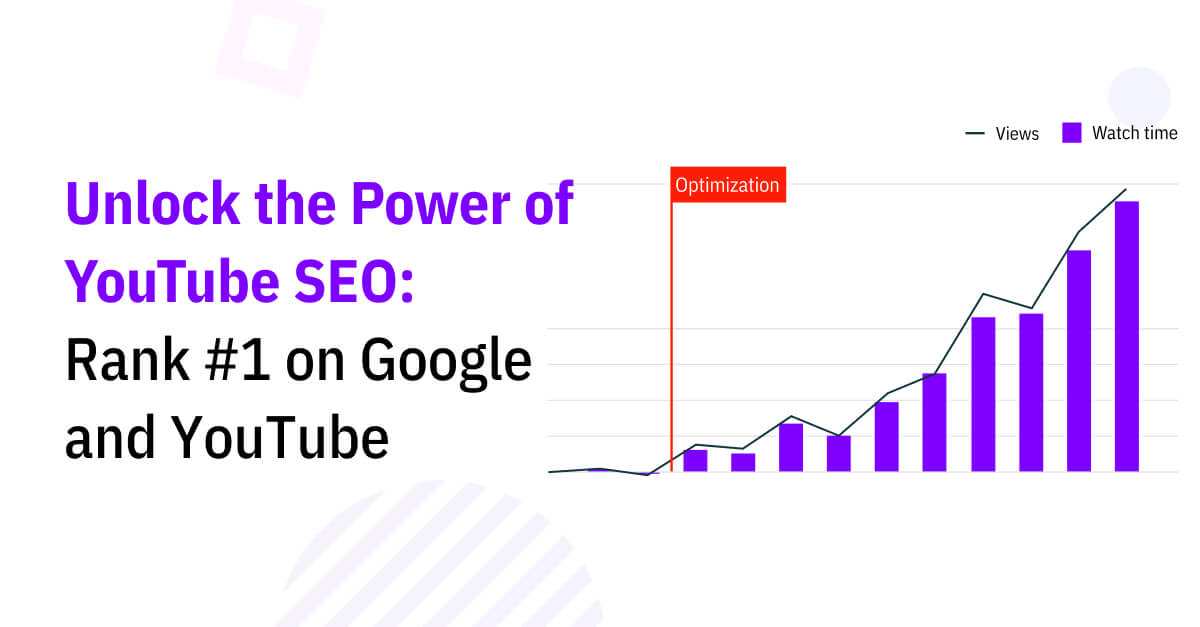
SEO stands for Search Engine Optimization. SEO is all about optimizing content for search engines in order to rank high on the internet. This content can be text, images, or videos.So when we are talking about YouTube, YouTube SEO is what you need.
YouTube SEO involves optimizing your channel, playlists, video metadata (title, description, tags, hahstags and closed captions), and the videos themselves.
Relevant YouTube Content + Optimized Metadata = More ViewsYouTube SEO formula
You can optimize your videos for search both within and outside of YouTube. The best known and most used search engine in the world is Google. But YouTube follows Google right behind on the 2nd place. With proper YouTube SEO, your video gets displayed in YouTube's search results or suggestions. Additionally, your own videos can also be featured in Google Search - as so-called video snippets. A video snippet is a search result with a thumbnail. In Google, videos for certain keywords are displayed above-the-fold.A key component to YouTube SEO is harnessing the power of your video's text in the form of transcripts, closed captions, and subtitles.The result: more views and lots of subscribers.
When talking about YouTube SEO, it's important to know how the YouTube algorithm works.The YouTube algorithm is an automatic system that determines what the users get to see when they are on YouTube. The system is supposed to recognize what the individual user wants to see and suggests this content. Since every minute more than 400 hours of new video material is uploaded by users on the platform, prioritization of video content is crucial.In the past, videos on YouTube were ranked based on their view count. The more views, the more relevant the video - that was the formula at the time.
Practically this led only to clickbaity thumbnails and video titles. The videos ranked high, although they did not provide the user with any added value.In recent years this has changed a lot. Today there are a lot of other factors that influence the YouTube ranking. We will discuss these in more detail.YouTube's algorithm has also changed to the extent that today there are clear rules on what counts as a view. This wasn't always so clear in the past...So where can you see the influencing power of the YouTube algorithm? Which pages have the algorithm in its backend. See here:
The algorithm also influences which videos get featured on:
Yes. That's a lot.Therefore, it is essential to understand what's the main idea behind the YouTube algorithm. And use this know-how to promote YouTube SEO of your videos.But keep in mind: the YouTube engineers constantly change the algorithm. They want to make it even better for the user.So you got to stay up to date... and it's important to get tips on how to do this.
As explained, the algorithm is constantly changing - by using a YouTube SEO tool you can stay on top and track your results. Tools like ours can help you to have your videos optimized. But what are the most important YouTube ranking criteria you have to consider?Frankly, it is not known exactly. Most experts believe that there are dozens, some even say hundreds or thousands of factors that influence your YouTube ranking.Our data shows that there are 8 factors that you should definitely pay attention to.
The watch time shows how long users watched a video on YouTube in total. If a user watched a video for 5 minutes and a second user watched it for 4 minutes, the total watch time is 9 minutes. If users watch videos for as long as possible, this leads to a high watch time, which has a positive effect on the algorithm and the video ranks accordingly higher. Keep in mind, that the main goal of YouTube is to keep users on the YouTube site as long as possible. All videos that make their contribution in the form of a high Watch Time will be rewarded with a high ranking. Thanks to the YouTube Analytics function, you can see the data in real-time.
The principle of the watch time applies not only to individual videos but also to the entire channel. Thus, the watch times of the individual videos on the channel get counted together. If the channel has a high watch time on a special topic, it gets a so-called authority from YouTube. This means that future videos on this topic will be ranked even higher.
This performance indicator measures how long videos are viewed on average. There are two ways of displaying audience retention:
Relative audience retention indicates how much % of the video is viewed on average. Whereas the absolute viewer retention indicates how many minutes the video is viewed on average.
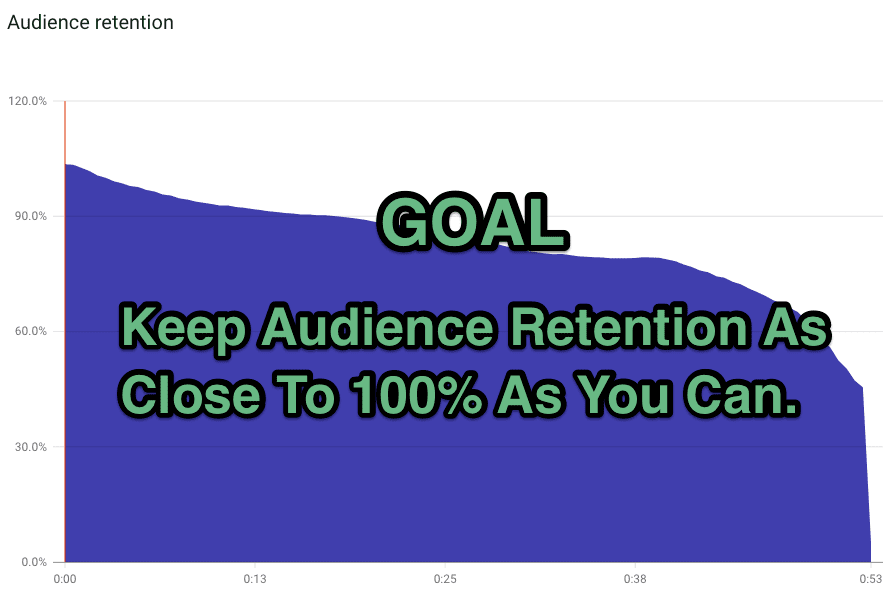
While one can argue that longer videos have an advantage over shorter ones in this respect, you shouldn't forget that it's ultimately the video content that matters.
The CTR shows in percent how many users click on the video at all when they see it in the search. The algorithm can understand, how relevant a video is for the user when the thumbnail and video title appears in search results or suggestions. In order to increase the CTR, you should think about a good title and a well-designed thumbnail.
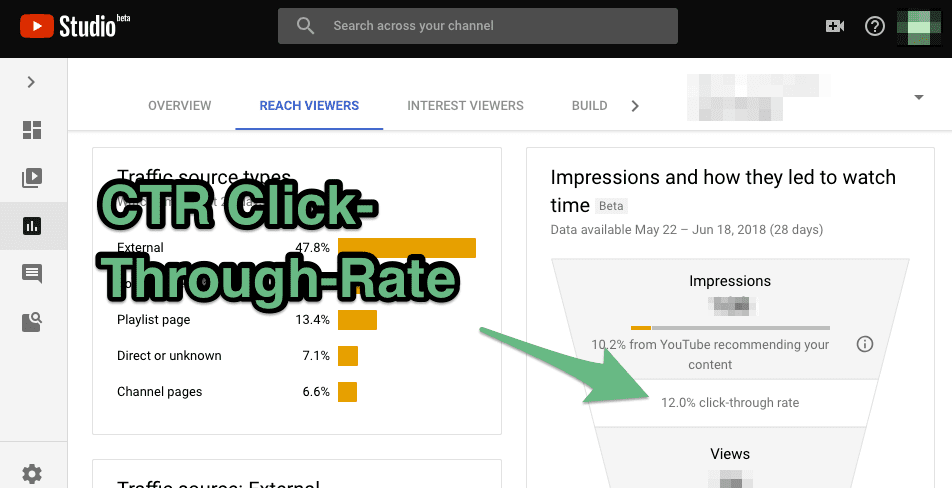
A YouTube channel that regularly uploads videos benefits greatly from this factor. The upload frequency indicates how often videos are uploaded to a channel. The more active the channel is and the more videos are uploaded, the better for YouTube SEO. In combination with the given authority (see point 2), this results in a very good basis for a high YouTube ranking.
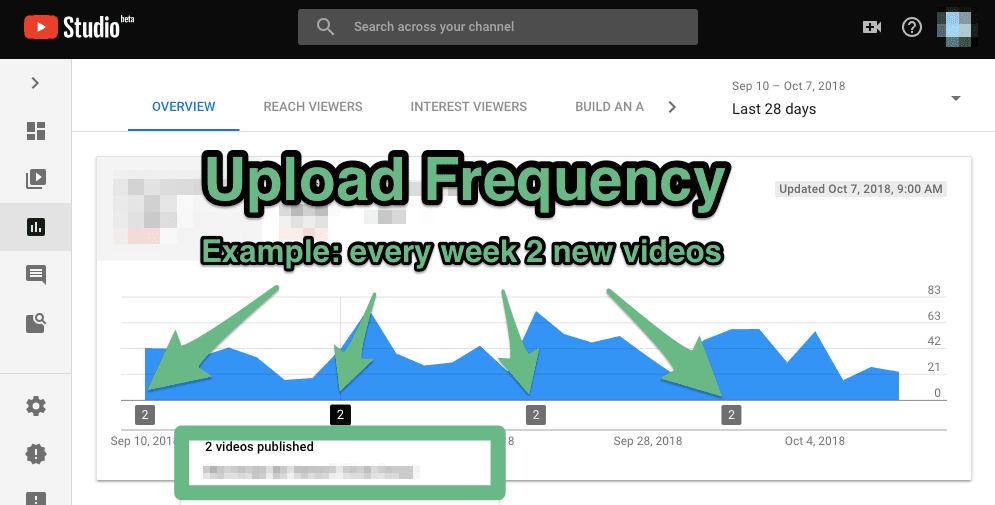
YouTube wants you to stay as long as possible on their platform. The session duration shows how long users stay on YouTube after watching a video. A longer session duration has a positive effect on the YouTube algorithm.
In addition to the session duration, the end of a session indicates when the user leaves YouTube. If users quickly jump off the video after watching it, the YouTube algorithm will take a negative view and this will have also a negative effect on YouTube SEO.
It is rated very positively by the YouTube algorithm if a video is the first to be viewed in the current session, e.g. if the video is accessed via an external link. This video finally leads the user to the platform and if this ideally leads to a longer session, the video will be ranked higher.
Apart from the factors we've mentioned above some experts think that comments and subscriber count are of utmost importance.Video Comments: Users who leave a comment usually enjoyed the video or at least engaged with it. This is a very good stimulus for the YouTube algorithm. To motivate users to comment on your video, try to ask questions at the end of the video, eg.: “what do you think about..?”Subscribers: Subscribers are interested in your content and are likely to watch videos in the future. It is especially a big deal if people subscribe to your channel after they have watched a video. If you want to ensure that, you should simply ask the users at the end of your videos to subscribe. Furthermore, you should insert a subscription button into your video.
So far we know what the YouTube algorithm is. But what are the most important factors for YouTube SEO and how does it look like in practice? In 4 simple steps, you get closer to the goal reaching the top of the YouTube ranking.
SEO & keywords go hand in hand. That's why you shouldn't ignore them under any circumstances. It is not only important how high a video ranks, the keywords take also care of where they rank and on which topic. Directly after the upload, the described key figures are not yet available and here the YouTube algorithm examines the keywords. First, it is about the keywords and to which topic they fit. Shortly after the upload YouTube tests the video first in the search and sees how the users react to it. So here is the chance to prove the relevance right from the start to achieve a high ranking.
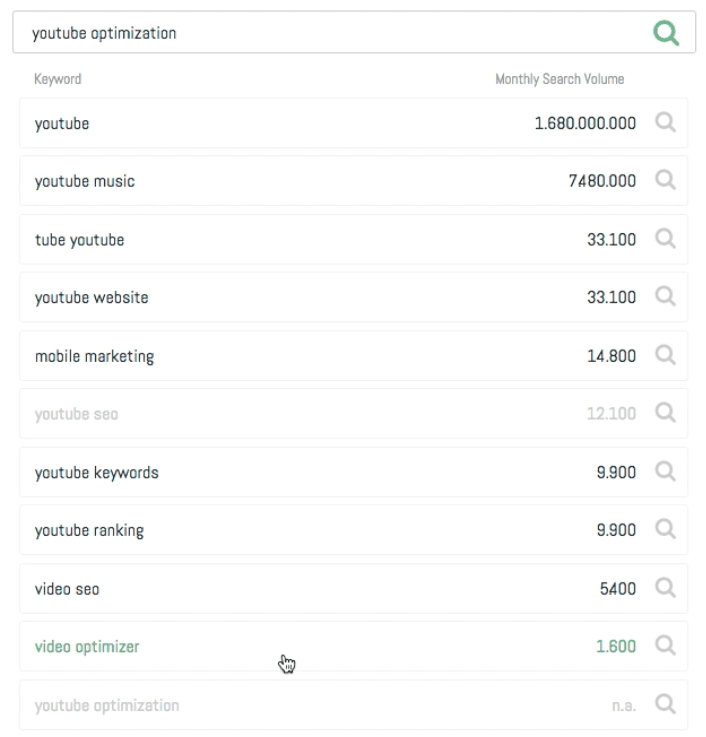
You should take care that you achieve the highest possible ranking with searched keywords because if nobody is searching for the keyword, even the top ranks do not really have a value for your video. To avoid this situation, YouTube research should be done in advance to find the right keywords for the video. In addition to YouTube's internal keyword tool, there are some keyword tool alternatives that help to find the ideal tags, so you don't have to spend a lot of time researching the internet to find a suitable keyword. This step will only take a few minutes.
A video should always be optimized and not simply uploaded without much thought. If you want to have a well-optimized video, you should keep following in mind:
a. Title of the video: Create a useful title, which includes your main keyword. It should show the users immediately, which topic your video handles and what kind of information you offer. If you place your main keyword right at the beginning of the title, this will give you an additional YouTube SEO boost.

b. Description: A good description that includes some relevant keywords, helps YouTube and Google to understand the context of your video. It is important, that you don't spam and that users can read your description fluently.
c.Tags: Use tags, which fit your video to appear more often in the YouTube Search. There are some tools, which help you to generate tags for free. There you can also see, what users have searched for to find your video.
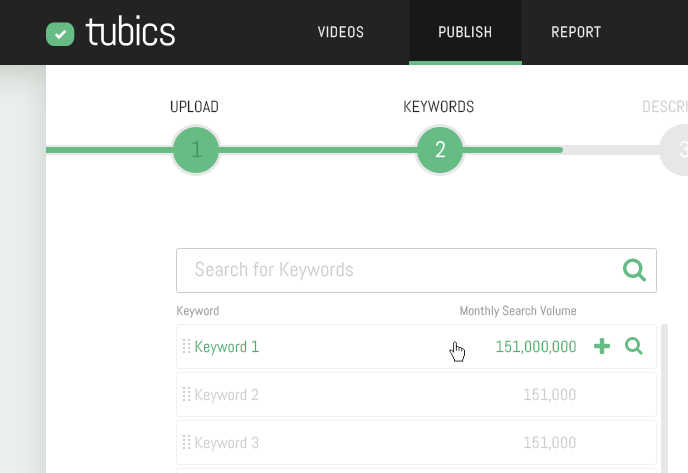
d. Thumbnail: A well-designed thumbnail attracts attention and is even more important than the title because if it looks boring people won't think about watching the video. So be sure to invest enough time when creating a thumbnail.
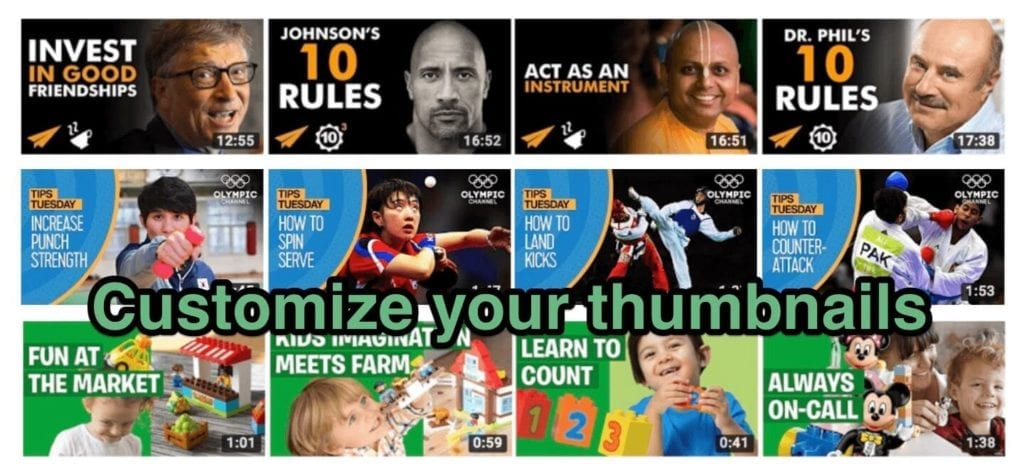
e. Video file name: Rename you file as your_keyword.mp4. Search engines can't look inside video content, so naming your video file as your focused keyword actually tells the search engine what your video is all about.
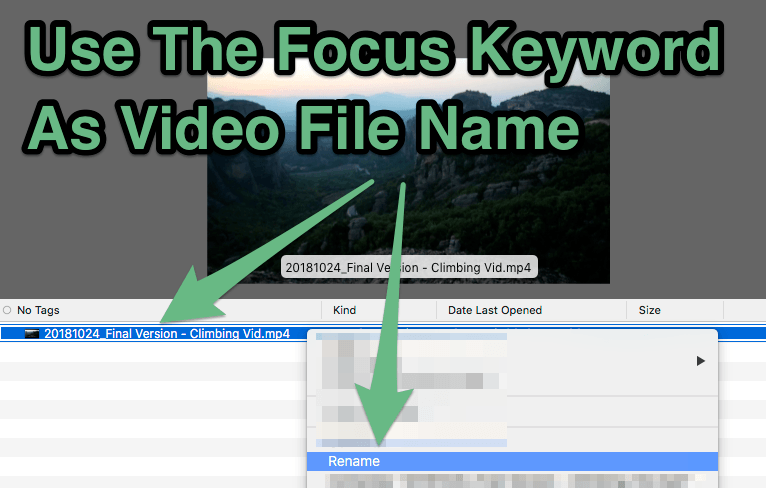
You should not only optimize your videos. The channel, which ideally contains numerous videos, must also be maintained. The name of the channel and its description, as well as the channel tags, are the be-all and end-all. In addition, you should occasionally do a kind of spring cleaning and sort out videos that are no longer relevant and/or work poorly. The channel authority can influence the ranking of a channel's video (see "Watch Time of Channel").
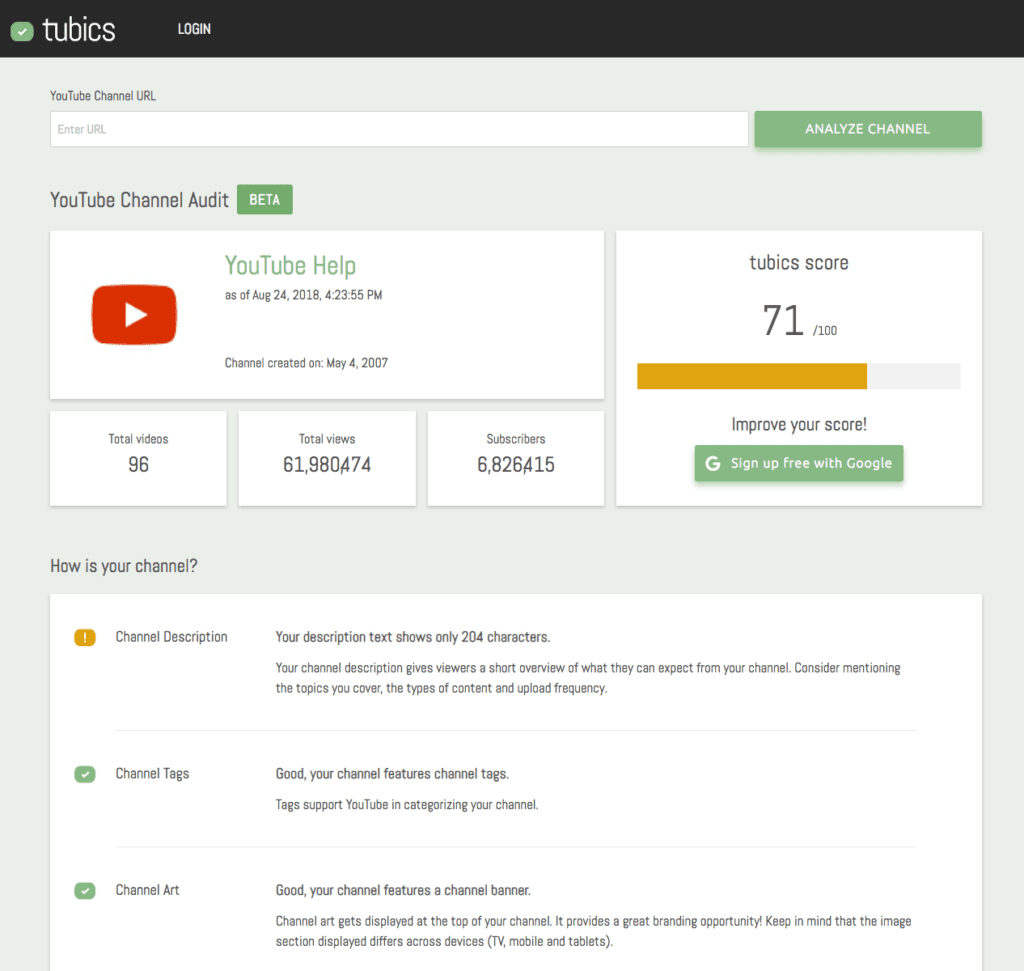
A good start for the optimization of your YouTube channel is:
Another important thing is to create playlists to some topics, where videos with the keywords for those topics fit.
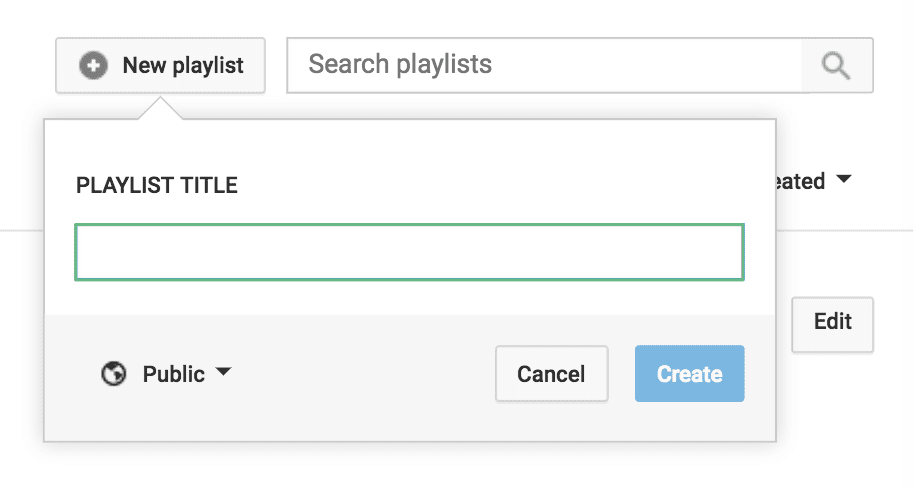
After a successful upload, you have to make sure that the video gets a certain degree of popularity to get many views. You can promote that by linking to the new video in other videos, adding external links, commenting on related videos or actively seeking viewers on social media. The possibilities are numerous and you should use them to quickly generate many views.
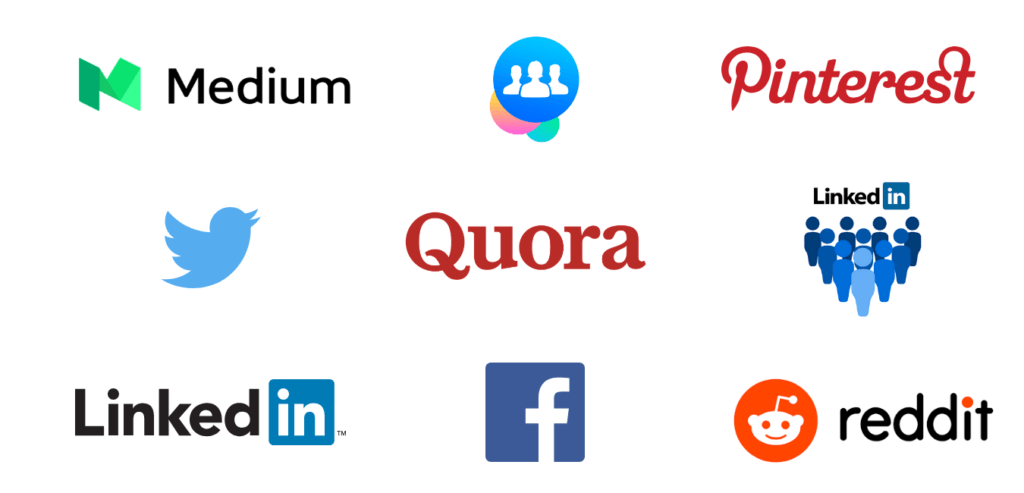
In order to carry out a first YouTube SEO success measurement, you have to wait 3-4 weeks from the time of optimization. During this period you should implement the above-mentioned tips in order to guarantee a high ranking.
With the tips in mind, you already have plenty of knowledge to become a YouTube SEO pro. But you can also use the YouTube algorithm for yourself. You can do this in just 3 simple steps:
YouTube must be able to test the relevance of the video using the YouTube search function. You can do this by including the keywords in the description and tags. Pay attention: You are not allowed to do keyword spamming but should use a meaningful title, which contains the keyword. The tags should be filled and can be varied as long as they still fit the topic. It is definitely recommended to use a YouTube tag generator for keyword optimization in order to quickly and easily add the most suitable keywords.
A high click rate must be ensured, as the title convinces the viewer and already signals the added value of the video for the user. A thumbnail that attracts attention is also extremely important. These two components are seen before the content of the video is even viewed.
A good and informative introduction is essential to prevent the viewer from jumping off, as this usually happens in the first seconds of a video. You have to signalize that your video has the answer to the questions of the users. In between, tension must be built up so that the viewers arouse interest. In the analytics, you can see when most users jump off to see which part of the video is not interesting to work on for future videos.
Are the old videos on my channel relevant? A question which could possibly occur at this point. But just because videos have been uploaded a long time ago doesn't mean that they should disappear into the dust. On the contrary - older videos can and should also be optimized for YouTube SEO. If you update the tags and the description, the watch time and other key figures will of course not be lost. However, it may happen that YouTube tests the video again for the keywords due to the update of the metadata and thus ranks it higher, regardless of the upload date.
To summarize the whole facts, the following has to be considered if you want to climb to the top of the YouTube ranking.
The YouTube algorithm is based on artificial intelligence and aims to provide users with the best possible content. This is the goal you should have in mind in order to promote a successful YouTube SEO. If you concentrate on all the points and get an understanding of the stimuli for the YouTube algorithm, you have a very good starting situation. Those who especially get a high click rate and viewer retention will be able to achieve a high ranking in YouTube SEO.Good luck! Let's climb to the top of the ranking!
.png)